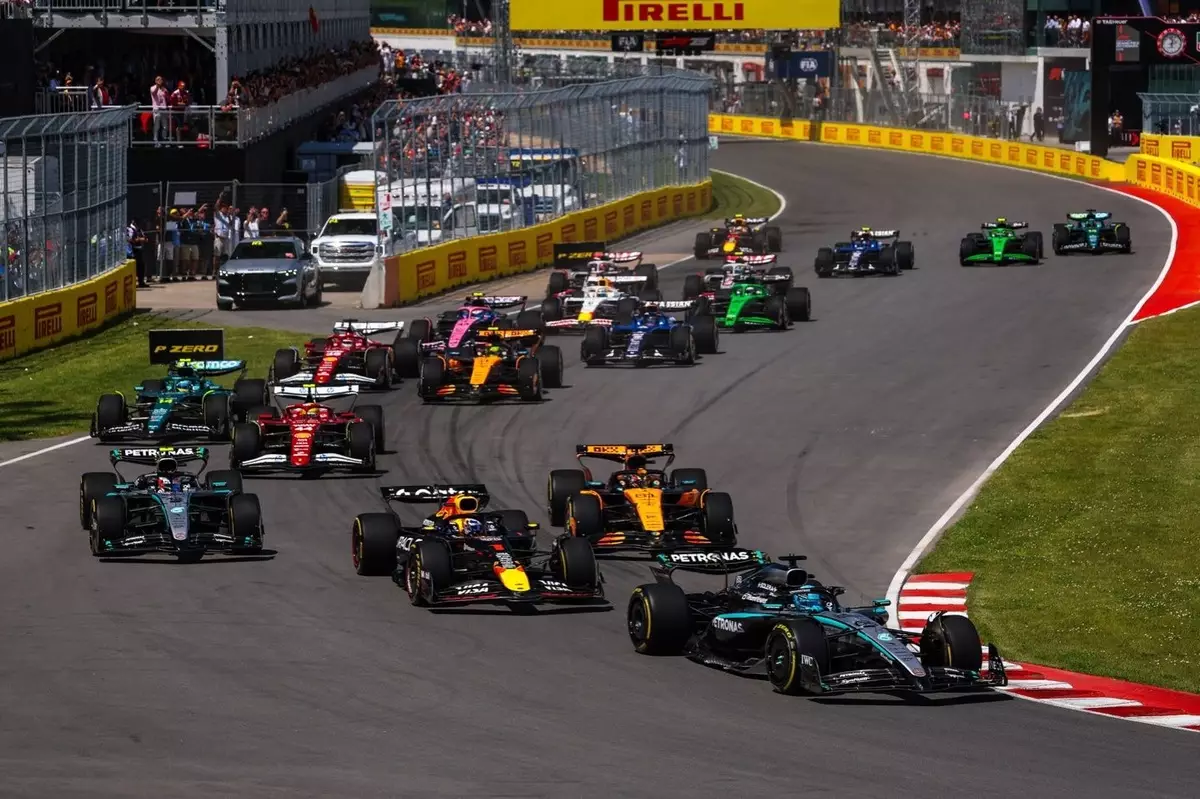Formula 1, long celebrated for its speed, innovation, and technological brilliance, is now demonstrating an inspiring shift towards environmental responsibility. The sport’s recent strides in reducing its carbon footprint reveal a dedication that goes beyond mere words — it signals a genuine transformation rooted in strategic planning and a refusal to rely solely on the thrill of competition. While critics often dismiss racing as inherently unsustainable, F1’s proactive measures challenge that narrative, positioning the sport as a powerful advocate for global sustainability goals.
The most striking aspect of F1’s environmental journey is the tangible progress the organization has achieved. In just seven years, they have managed to cut their carbon emissions by over a quarter, bringing their footprint from approximately 229,000 tons of CO2 equivalent in 2018 down to roughly 169,000 tons by the end of 2024. This shift isn’t accidental; it results from comprehensive efforts to overhaul operational practices, leverage renewable energy, and innovate within logistical models. It reveals a sport that recognizes its influence and is willing to leverage that influence to spearhead meaningful change.
Transformative Strategies Driving Real Impact
F1’s success is not purely about numbers, but about the systemic changes implemented across the entire ecosystem. Factory operations, for example, now predominantly utilize renewable energy sources, reducing emissions by an impressive 59%. Such a shift is no small feat given the scale and complexity of Formula 1’s manufacturing hubs, but it exemplifies a strategic commitment to sustainability not often associated with the high-tech world of racing.
Logistics, historically a significant contributor to the sport’s carbon footprint, has undergone a remarkable transformation. The adoption of more efficient air freight options, like Boeing 777F jets, combined with biofuel-powered trucks and innovative freight operations, has lowered emissions from transportation by approximately 9–10%. These initiatives demonstrate that sustainability is achievable even within highly complex, global supply chains when passion and ingenuity are aligned with ecological priorities.
Travel emissions from teams and spectators have also decreased considerably, driven by the adoption of remote work policies and smarter scheduling. Such operational efficiencies show that even in a sport renowned for its glamor and spectacle, practical steps can create a tangible positive impact. This comprehensive approach proves that sustainability need not hinder growth; instead, it can catalyze innovation and operational excellence.
Visionary Leadership and a Clear Roadmap for the Future
Stefano Domenicali’s leadership underscores the sport’s unwavering commitment to net zero by 2030. His statement emphasizes that carbon reduction is a “concrete goal” backed by tangible results, asserting that F1’s technological and logistical innovations are enablers of a sustainable future. The upcoming regulations for 2026, including new car chassis, engines, and the debut of sustainable fuel, represent a seismic shift, aligning racing technology with environmental responsibility.
Introducing sustainable fuels is perhaps the most ambitious stride forward, with potential ripple effects extending beyond racetracks into everyday transportation. Considering the enormous visibility and technological advancements driven by Formula 1, embedding sustainability into its core promises a broader societal benefit — demonstrating that high-performance vehicles can coexist with ecological consciousness.
F1’s approach is far from superficial window dressing. Instead, it’s rooted in a thorough, sport-wide engagement that seeks to reimagine its relationship with the environment. Balancing rising popularity and record-breaking attendances with a radical reduction in emissions shows that growth and sustainability are not mutually exclusive. Conversely, F1’s model could serve as a blueprint for industries worldwide that grapple with similar challenges: how to innovate boldly without compromising ecological integrity.
In this accelerated pursuit of sustainability, F1 positions itself as more than just entertainment — it’s a catalyst for societal change, proving that even in a sport driven by speed and passion, purpose and responsibility can and must go hand in hand. Their trajectory illustrates that ambitious environmental goals are not only achievable but are essential to ensuring a future where progress and planet can coexist harmoniously.


Leave a Reply